Landscapes and Minimalism: The Influence of Japanese Wabi-Sabi in Photography
- Olivier
- May 27, 2023
- 8 min read
Updated: Mar 29
The concept of Wabi-Sabi (侘寂) is a Japanese aesthetic and philosophical principle that finds beauty in imperfection, simplicity, and the transient nature of things. It has its roots in both Chinese Taoism and Zen Buddhism and is often described as an appreciation of the world's impermanent and incomplete beauty around us.
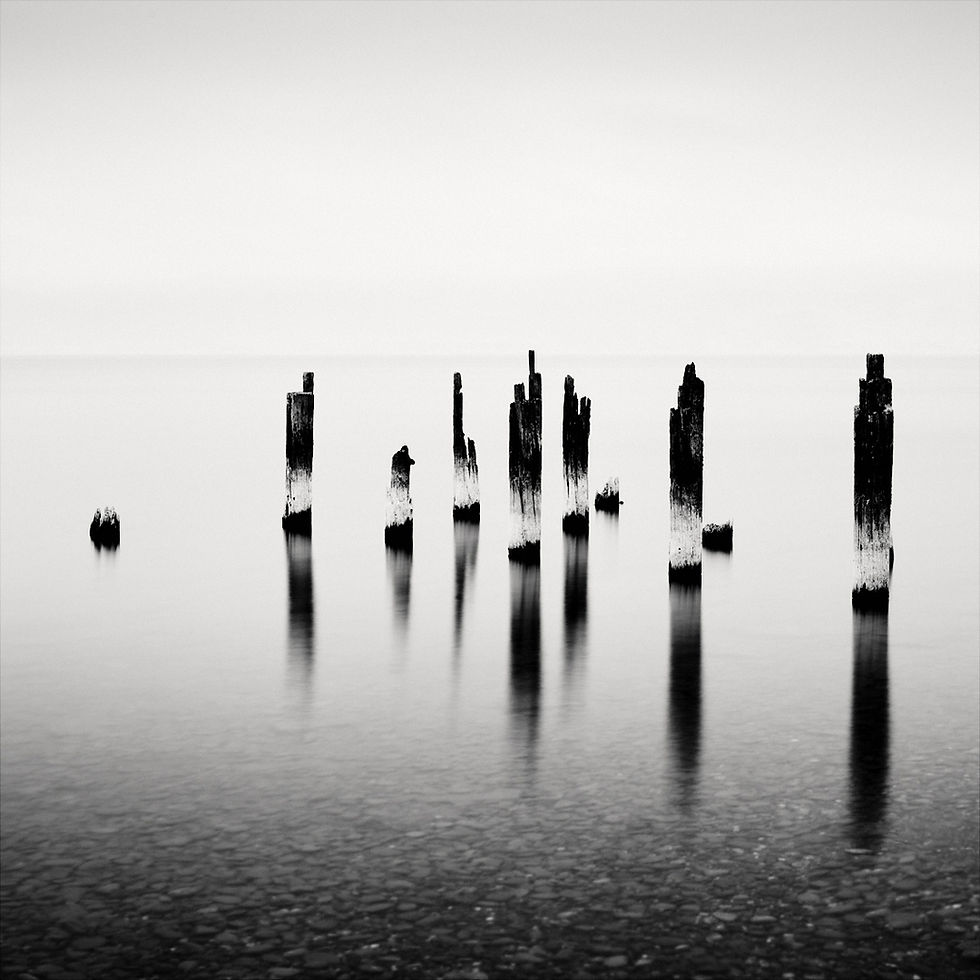
As with any cultural concept, its perception varies from one person to another, and its application can fluctuate over time with modern evolution. Despite this, Wabi-Sabi maintains a lasting influence on Japanese values and aesthetics, remaining a unique vision of beauty and life.
Transposed to photography, this concept offers artists a creative vision and a different appreciation of old or abandoned objects. Wabi-Sabi also adds an extra dimension to minimalist photography, enriching the artistic practice with a deeper appreciation of imperfection, simplicity, and the ephemeral. It encourages seeing beyond the superficial and finding deeper meaning in the world around us.
Integrating Wabi-Sabi values into long exposure photography is also a valuable addition to this specialty. This integration not only enriches research and inspiration but also encourages a different interpretation of our environment. It reminds us of the intrinsic beauty in the world's material imperfections and particularly allows us to value abandoned structures and unusual objects in our landscapes. But let's start at the beginning...
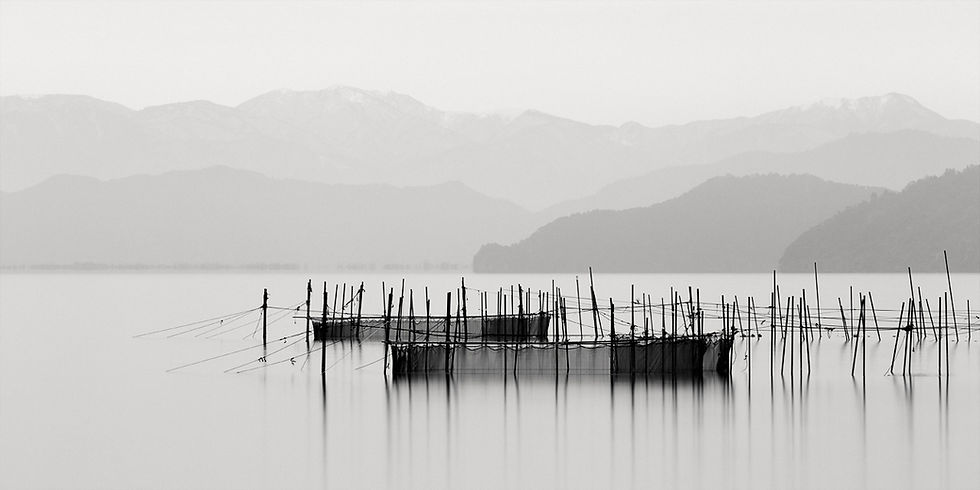
Origins of Wabi-Sabi
The origins of Wabi-Sabi in Japan date back several centuries. Although it's challenging to pinpoint exact dates for the emergence of the concept, as it developed gradually and organically, certain key milestones can be identified in its evolution. Its development is closely linked to religious and philosophical movements as well as influential historical figures, and it continues to influence art, design, and Japanese culture to this day.
Kamakura Period (1185-1333): The adoption of Zen Buddhism in Japan during this period greatly influenced the development of Wabi-Sabi. Zen emphasizes simplicity, meditation, and the appreciation of beauty in imperfection and the ephemeral. It gradually shaped the concept and principles of Wabi-Sabi.
Chinese Taoism, with its valorization of natural harmony and simplicity, also influenced and complemented the Wabi-Sabi philosophy, promoting an appreciation for naturally imperfect forms.
Muromachi Period (1336–1573): Wabi-Sabi is often considered to have begun taking its current form during this period, where Japanese aesthetics evolved towards greater simplicity and subtlety, in contrast to the opulence favored by the ruling warrior class.
Sen no Rikyū (1522–1591): One of the names most associated with Wabi-Sabi is Sen no Rikyū, a tea master from the Azuchi-Momoyama period (1573–1603). Rikyū is regarded as having perfected the tea ceremony and integrated the principles of Wabi-Sabi into his practices and aesthetics, notably through the use of simple and rustic materials for tea utensils, and the design of tea houses.

What is Wabi-Sabi
The term encompasses two concepts:
- Wabi (侘) signifies harmony, peace, tranquility, or simplicity. Historically, the term referred to the serenity and absence of ostentation in solitude. It expresses rusticity, freshness, or quietude. It can also refer to anomalies arising from the construction process, which add uniqueness and elegance to an object.
- Sabi (寂) denotes the beauty or serenity that comes with age, when the life of an object and its impermanence are evident in textures and wear. It values any visible irregularity that adds depth and uniqueness to the object. This includes, for example, patina, cracks, and any other element that shows the passage of time.
Wabi-Sabi is present in Japan in many areas of expression, from the arts (such as pottery, calligraphy, and gardens) to the tea ceremony, where the focus is on authenticity, simplicity, and the appreciation of objects in their most natural and modest state. This concept encourages recognizing and celebrating the richness and depth found in the natural imperfection of the material world.
Cultural and Social Influence
Wabi-Sabi is deeply respected and cherished by the Japanese as an essential expression of their culture, centered on modesty, acceptance of transience, and the pursuit of beauty in the imperfect aspects of life.
As a result, Wabi-Sabi permeates many aspects of Japanese society, influencing art, design, fashion, and even daily attitudes and behaviors. It manifests in various ways:
1. In craftsmanship: Pottery, ceramics, and kintsugi (the art of repairing broken pottery with gold or silver, thus highlighting the cracks) are examples where Wabi-Sabi is highly valued. The irregularities and unfinished appearance of some works are considered not as flaws but as elements that make the object unique and beautiful.
Raku pottery, characterized by its irregular surfaces and unique colors resulting from specific firing techniques, is another example of Wabi-Sabi aesthetics in art.
2. Architecture and interior design: Japanese architecture and interior design often reflect Wabi-Sabi through the use of natural materials, which show wear and aging elegantly. Spaces are designed to be simple, functional, and in harmony with nature, encouraging a more contemplative and mindful life.
3. Gardens: Japanese Zen gardens are a classic example of the representation of the Wabi-Sabi concept in nature. Gardeners use asymmetrical elements, rocks, sand, and plants to create scenes that evoke the ephemeral and imperfect beauty of the natural world.
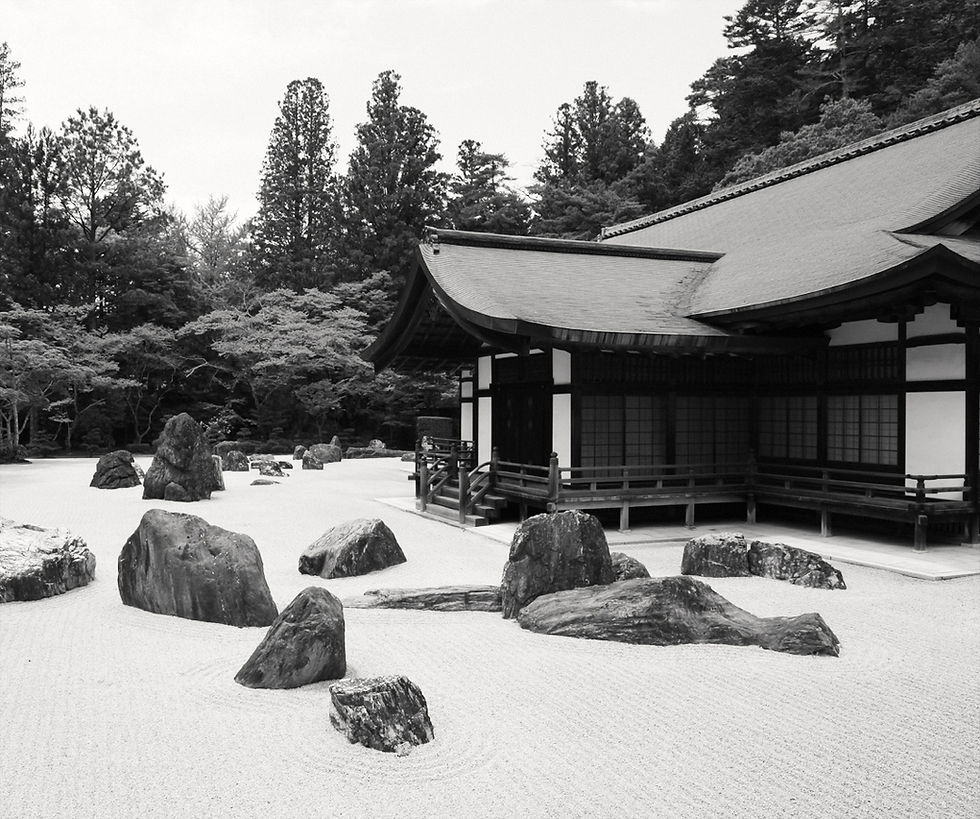
4. Tea Ceremony: As mentioned earlier, the very concept of Wabi-Sabi is notably rooted in the tea ceremony, Chanoyu. This tradition, elevated to an art form, emphasizes simplicity, humility, and the recognition of beauty in irregular tea bowls and handmade utensils.
5. Fashion: Some Japanese fashion brands embrace the principles of Wabi-Sabi, producing garments that value the natural texture of fabrics, asymmetry, and muted colors.
Here are some notable examples:
- Visvim: Founded by Hiroki Nakamura, Visvim is known for its artisanal approach to fashion, combining traditional techniques with modern innovations.
- Kapital: The brand is famous for its high-quality denim garments that often feature worn effects, repairs, and artisanal details.
- Yohji Yamamoto: Although Yohji Yamamoto is more often associated with fashion's avant-garde, his creations are celebrated for their use of draped fabrics and asymmetrical shapes.
- Issey Miyake: Known for his innovations in fabric pleating and the use of techniques that allow his garments to take on unexpected forms.
Wabi-Sabi and Photography
The concept of Wabi-Sabi, with its appreciation of imperfection and simplicity, finds a particular resonance in minimalist photography. This synergy enriches the photographic practice in several ways, offering a source of inspiration and a new perspective on composition and subject. Here are a few aspects that seem to illustrate this notion.
Integration of Wabi-Sabi into Minimalist Photography
1. Appreciation of Imperfection: In minimalist photography, imperfection can become the main subject, thereby capturing the very spirit of Wabi-Sabi. Textures, cracks, and asymmetries in natural or urban environments create powerful images that evoke deep emotions, reflecting beauty in decay or decline.
2. Simplicity and Refinement: Minimalism seeks to reduce a scene to its most fundamental elements. Wabi-Sabi complements this approach by valuing simplicity not only in composition but also in the subject itself. Photographs that embody both minimalism and Wabi-Sabi encourage the viewer to contemplate tranquility and serenity, inviting introspection.
3. Focus on the Ephemeral: Capturing fleeting moments or scenes that embody the passage of time (long exposures) illustrates the concept of Sabi. Minimalist photography can use this notion to highlight the transience of moments, such as the evolution of natural light, seasonal changes, or abandoned objects (see below).
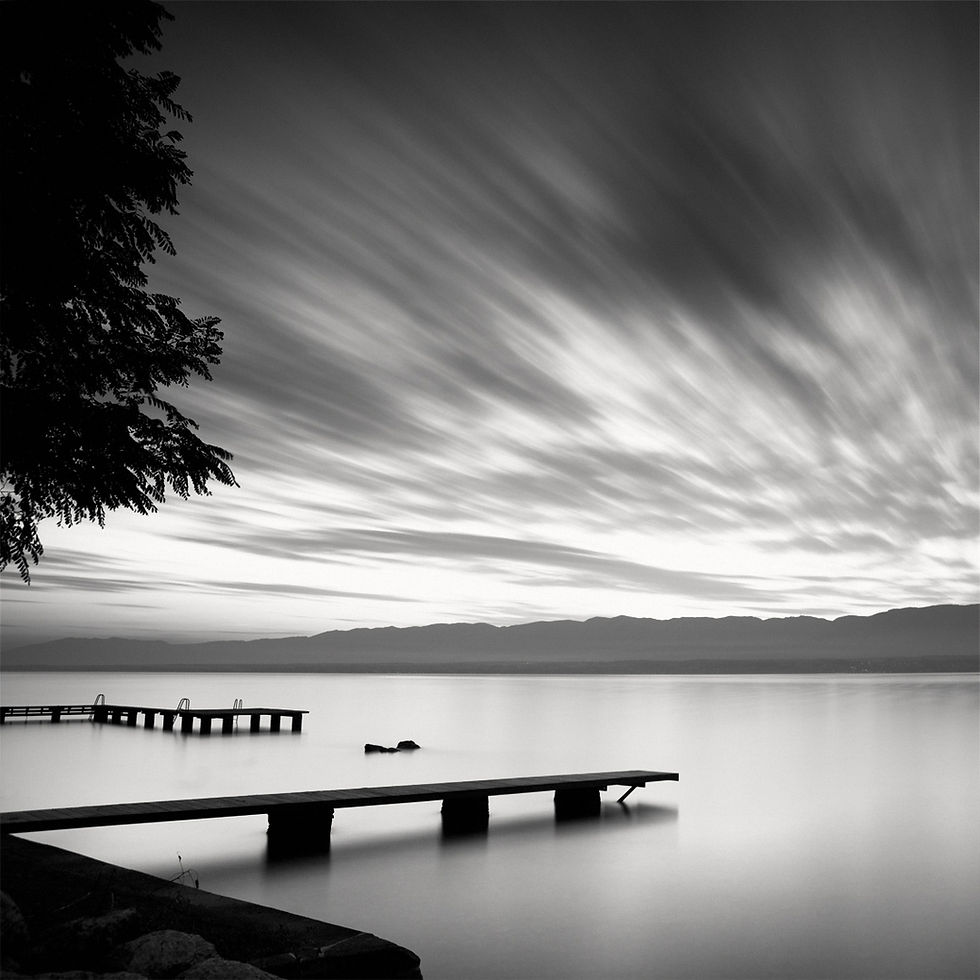
4. Emotional Depth: By integrating Wabi-Sabi into their work, photographers explore different levels of emotional expression, capturing not just images but also feelings and stories. This pursuit opens up new potential connections with the audience.
5. Vision of Beauty: Wabi-Sabi offers a unique perspective on what is considered beautiful. It allows photographers to break away from traditional norms and seek beauty in unexpected places. This can inspire renewed creativity and encourage further experimentation with subjects and techniques.
6. Authenticity and Connection: The principles of Wabi-Sabi encourage photographers to pursue authenticity in their work, capturing subjects in their truest and most natural state possible without excessive post-processing. This authenticity fosters an honest connection between the photographer, the subject, and the viewer.
7. Reflection on Transience: By highlighting the beauty of the ephemeral, Wabi-Sabi inspires photographers to reflect on the transient nature of life and the environment. This, in turn, enriches visual storytelling and adds meaning to their work.
Wabi-Sabi and Abandoned Structures
Wabi-Sabi blends seamlessly with the photography of ruins, worn objects, and neglected structures, while long exposure techniques add an extra temporal and emotional dimension to these images. Read my article on the value of abandoned structures in minimalism.
Photographing these objects highlights the beauty and poetry of architectural decay. Eroded textures, cracked walls, and colors faded by time embody the Wabi-Sabi aesthetic perfectly, revealing a unique beauty in imperfection. This approach invites the viewer to reflect on the stories and lives of those who designed or used these structures.

Wabi-Sabi and Long Exposures
Long exposure photography captures the passage of time in a single image. Applied to abandoned structures, this technique transforms a static scene into a living image, where light and natural elements like wind and water add movement and life. Long exposure, by smoothing out details, creates a surreal atmosphere that enhances the visual and emotional impact of dilapidated structures.
Here are some added values that Wabi-Sabi brings to long exposure techniques in minimalist photography:
1. Enriched Visual Storytelling: By combining Wabi-Sabi and long exposures, photographers can tell deeper and more nuanced stories about decline, forgetfulness, and nature's reclamation of spaces built by humans.
2. Exploration of Temporality: This approach allows for the exploration of concepts of temporality and permanence, inviting meditation on the passage of time and the human impact on the environment.
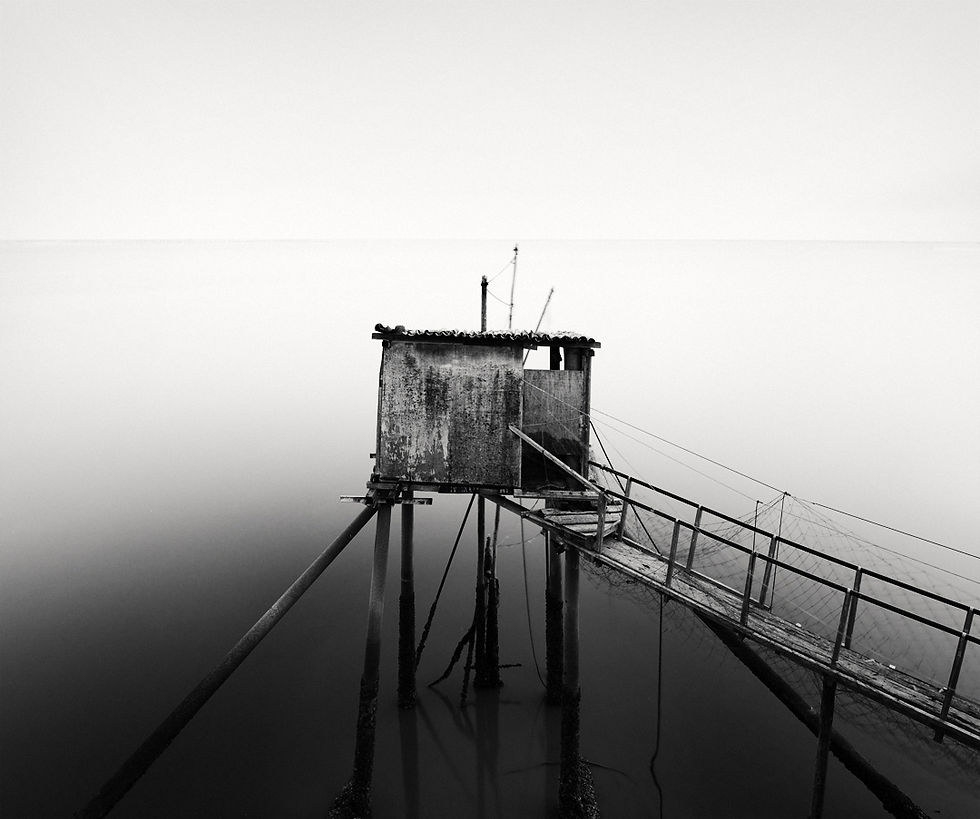
3. Unique Visual Aesthetics: Valuing deteriorated structures in long exposures according to the principle of Wabi-Sabi offers a unique visual aesthetic, where degradation and the passage of time are celebrated rather than seen as elements to avoid.
4. Emotional and Aesthetic Depth: Capturing images that show beauty in abandonment and the passage of time can evoke a range of emotions in the viewer, creating a deeper connection with the image and its subject.
The Final Word
Integrating Wabi-Sabi into landscape photography encourages reflection on our relationship with nature and time, highlighting the beauty hidden in transitions and imperfections. Techniques like long exposures amplify these themes, adding a temporal dimension that enriches the visual and emotional composition of the images.
Transposed to landscape photography, Wabi-Sabi thus invites us not to limit ourselves to what we see. It is rather about feeling and conveying tranquility, melancholy, or the austere beauty of environments. This approach encourages searching beyond conventionally perfect scenes, valuing instead the moments and imperfect aspects of nature that reveal its true essence.






